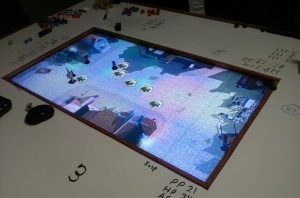
With technology rapidly evolving, educators are constantly seeking innovative ways to engage students and make learning more interactive. Augmented Reality (AR) is a game-changing technology that has the potential to revolutionize the way we educate students, particularly in the field of science. By seamlessly integrating AR in science education games, we can create immersive and dynamic learning experiences that captivate students’ curiosity, enhance their understanding, and foster a deeper connection with scientific concepts.
I. Understanding Augmented Reality:
1.1. Definition of Augmented Reality
Augmented Reality combines virtual elements with the real world, enhancing the overall perception and interaction by overlaying digital information onto the physical environment using technology like smartphones, tablets, or wearable devices.
1.2. How Augmented Reality Works
AR applications use the camera on a device to recognize and track images or physical objects, allowing the overlay of digital elements such as animations, 3D models, or informational text on top of the real-world view.
II. The Role of Augmented Reality in Science Education:
2.1. Enhancing Visualization
One of the significant benefits of AR in science education games is the ability to visualize complex scientific concepts. By overlaying digital models or data onto physical objects or locations, students can better understand abstract concepts like molecular structures, planetary movements, or the human anatomy by visually observing and interacting with them in a more tangible way.
2.2. Fostering Experiential Learning
AR bridges the gap between theoretical knowledge and real-world application. By immersing students in a virtual world enriched with AR elements, they can conduct virtual experiments, simulate scientific processes, or explore different environments without the need for expensive equipment or physical setups. This hands-on experience fosters active learning, problem-solving skills, and critical thinking within the realm of science.
2.3. Engaging and Motivating Students
Traditional teaching methods often struggle to capture students’ attention and maintain their interest. AR in science education games offers an interactive and gamified learning experience that stimulates curiosity and engagement. By utilizing AR technology, students can embark on virtual adventures, solve puzzles, or participate in quests that make learning more enjoyable and motivate them to explore and discover.
III. Successful Implementation of Augmented Reality in Science Education:
3.1. Content Alignment
To ensure successful integration, AR should be aligned with the curriculum and learning objectives. By mapping AR experiences to specific scientific topics and ensuring coherence with educational standards, it becomes a valuable tool for both teachers and students.
3.2. Collaborative Learning Opportunities
AR can facilitate collaborative learning experiences, allowing students to work together on projects, solve problems, or conduct experiments in a shared augmented space. This fosters teamwork, communication skills, and provides opportunities for peer feedback and active participation.
3.3. Accessibility and Inclusivity
With the use of accessible devices like smartphones or tablets, AR in science education games can reach a wider audience, breaking down physical barriers and enabling students from diverse backgrounds to access interactive learning experiences regardless of their location or available resources.
Conclusion:
The integration of Augmented Reality in science education games presents an exciting opportunity to revolutionize the way students engage with scientific concepts. By enhancing visualization, fostering experiential learning, and increasing student engagement, AR becomes a powerful tool in science education. With careful content alignment, collaborative learning opportunities, and a commitment to accessibility, we can utilize this technology to empower students and create a generation of scientifically literate individuals ready to tackle the challenges of the future. So, let’s embrace the infinite possibilities of Augmented Reality in science education and pave the way for a more immersive and effective learning environment.


